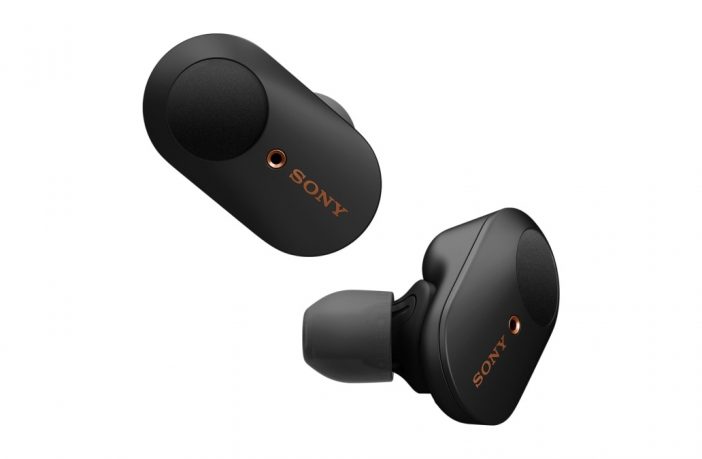
Just a few years ago, the idea of headphones without any physical connection between the left and right channels was considered science fiction. Then along came a small German audio manufacturer called Bragi in 2015, with The Dash, billed as the world’s first commercially available true wireless stereo (TWS) headset. Although these headphones now seem very dated and don’t hold up very well against newer, better competition, they have paved the way for a massive transformation in the personal audio space.
Fast forward to 2020, and a new pair of truly wireless earbuds is released practically every week. There are premium options such as the Rs. 999.24,900 Apple AirPods Pro and Rs. 9,999. 19,990 Sony WF-1000XM3 at the high end of the price range, and there are options such as the Truke Fit Pro that cost less than Rs. Wireless headphones are the future.
True wireless earbuds are virtually as good as full-size earbuds
Until last year, good wireless sound still largely depended on important components like drivers, quality digital-to-analog converters, dedicated chips, and multiple microphones to enable active noise cancellation. Two key launches in 2019 showed that you no longer need the large form factor of over-ear headphones to get it right. The first was the Sony WF-1000XM3, followed a few months later by the Apple AirPods Pro.
These two true wireless headphones are impressive for one key reason: high-quality active noise cancellation. Despite their small form factor, Sony and Apple headphones, as well as other launches like the Sennheiser Momentum True Wireless 2, manage to offer competitive active noise cancellation despite the size of the headphones. We’ve now reached a point where premium true wireless earbuds are virtually as good as their full-sized counterparts, for around the same price.
“In the Sony WF-1000XM3, by using the same QN1e chip as our flagship noise-canceling model WH-1000XM3, Sony was able to deliver similar noise-cancelling performance,” says Mani Balan, Product Manager for Business audio at Sony India. The QN1e chip is a version of the Sony WH-1000XM3’s QN1 chip intended for true wireless earbuds and indeed offers similar quality of active noise cancellation despite a smaller form factor.
Constant improvements in Bluetooth audio transmission, as well as the development of new Bluetooth standards, have ensured that sound quality also keeps pace. The presence of advanced codecs such as Qualcomm aptX on true wireless earbuds such as the Sennheiser Momentum True Wireless 2 has resulted in top-notch sound quality that matches what is offered by highly wireless over-ear headphones. appreciated such as Audio. Technica ATH-M50xBT at a slightly higher price, with good active noise cancellation.
Will true wireless earbuds eventually replace other form factors?
Well, not quite. There will always be demand for full-size over-ear and over-ear wireless headphones, as well as the now rather outdated neckband form factor for wireless headphones. However, the demand for truly wireless earbuds is greater than ever.
“While the overall headset market is growing at a rapid pace, we have not seen any impact on traditional wireless neckband and over-ear headphones. All form factors in the wireless segment have grown over last year, however, true wireless is growing at a much faster rate than traditional wireless earbuds,” says Balan, suggesting that consumers are actively choosing the convenience and comfort of being completely wireless. .
We’ll likely see many more true wireless product launches in the months and years to come.
Although I’ve been reviewing TWS earbuds since 2016, many big names in the industry have been rather late to the game, including Sony itself. The company only recently launched the WF-SP800N and WF-XB700, its first true wireless earbuds in India. Now, the company is also offering the WF-1000XM3, its flagship true wireless headphones, priced at Rs. 9,999. 19,990 in India. It launched a year after the global launch, which Sony’s Balan said was due to the global pandemic, which put earlier launch plans on hold.
As businesses slowly begin to reopen, Sony has decided to enter the sector and take Apple’s dominance in the true wireless segment in India. “We were carefully studying the market to come up with the right kind of product for the Indian market. After studying customer needs, preferences and analyzing market developments in different price segments, we have introduced a strong range in the mass segment as well as the premium segment. We have also entered the mass market with our recently launched Extra Bass Truly Wireless WF-XB700 headphones, priced at Rs. 9,999. 9,990,” says Balan.
![]()
Even in the affordable space, there is no shortage of options in India. OnePlus made its much-anticipated debut with the Rs. 4,990 Buds, Vivo launched the TWS Neo with aptX support for Rs. 999. 5,990, and the Redmi Earbuds S proved that good sound can be achieved with true wireless earbuds without burning a huge hole in your wallet. If you are looking for active noise cancellation but don’t want to spend too much, the Huawei Freebuds 3i offers this feature for Rs. 9,999. 9,990.
All of this makes one thing clear: true wireless earbuds are the future. While all other form factors will still be around, the day is not far away when virtually everyone will own a pair of truly wireless earbuds.
Why are smartphone prices increasing in India? We discussed it on Orbital, our weekly technology podcast, which you can subscribe to via Apple Podcasts, Google Podcasts, or RSS, download the episode, or just hit the play button below.
Tech




